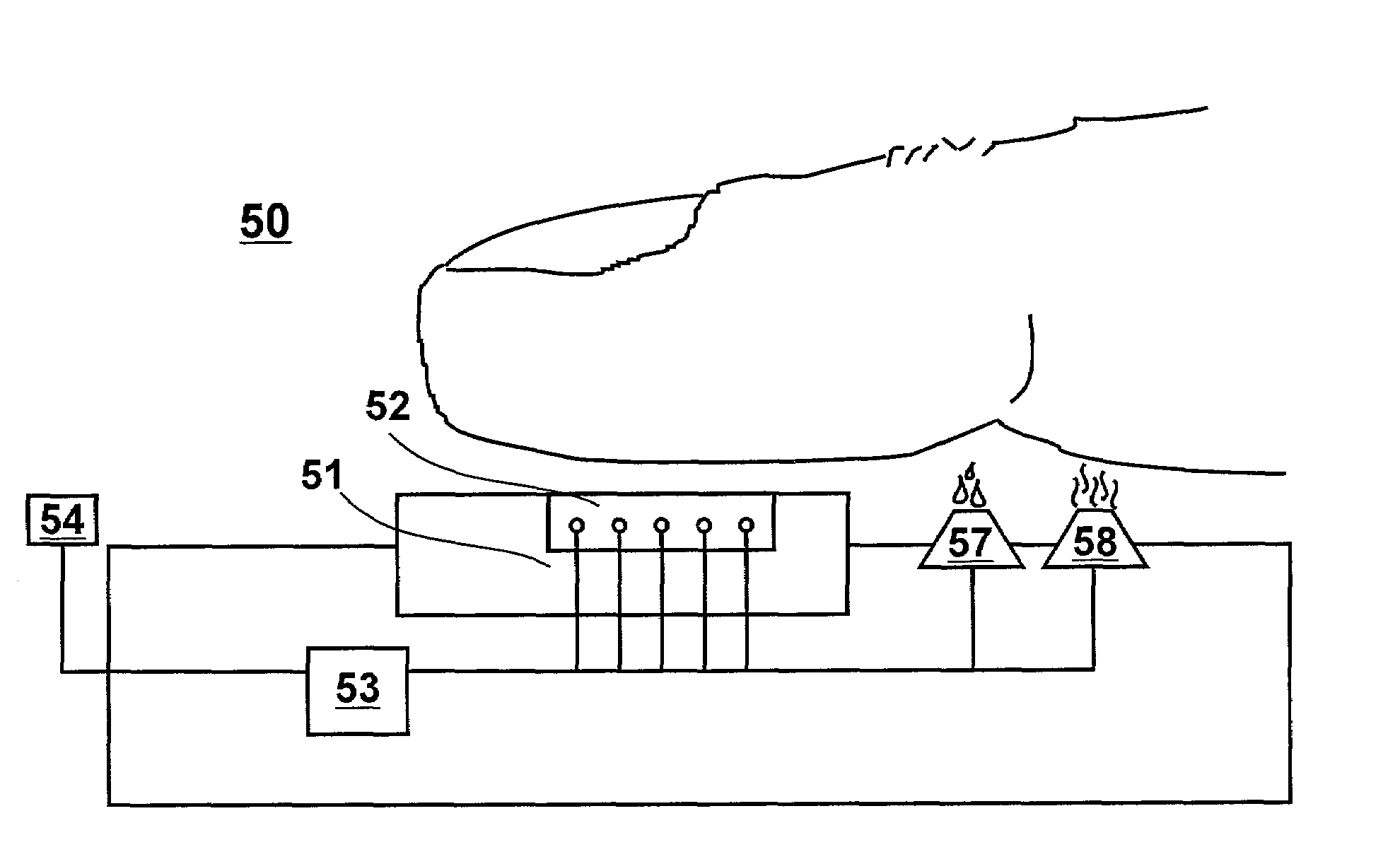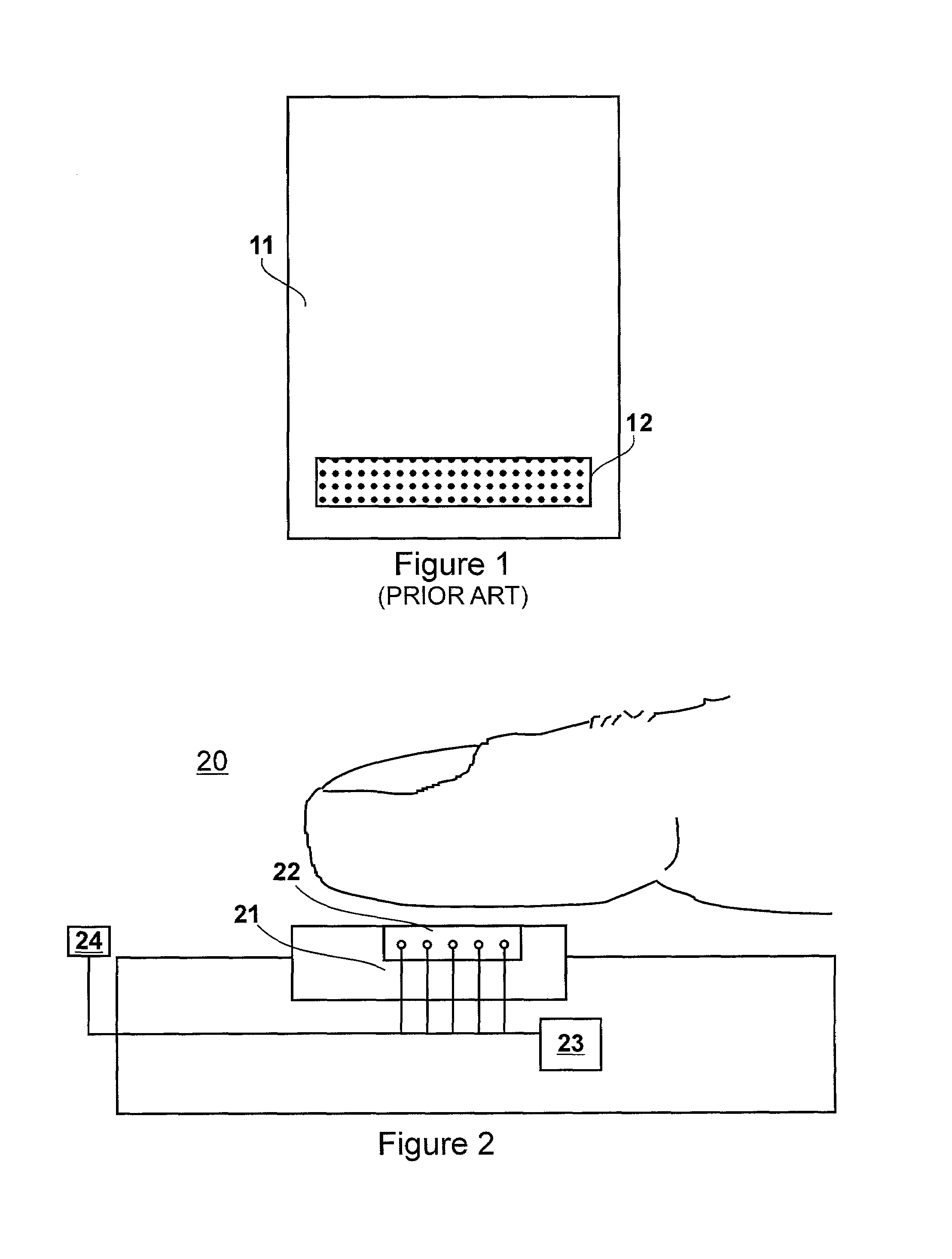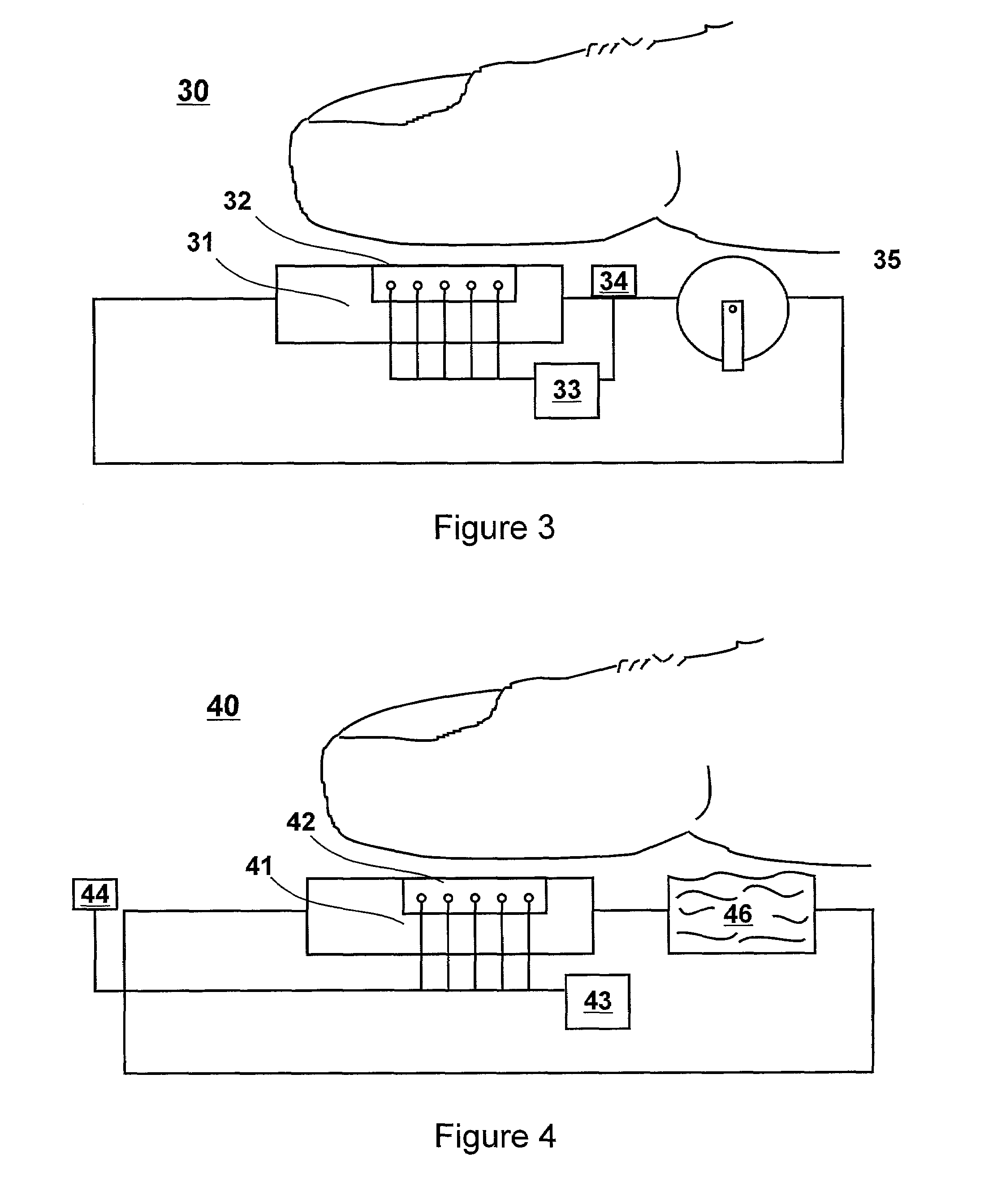Biometric imaging device compensating for non-biometric parameters
- Summary
- Abstract
- Description
- Claims
- Application Information
AI Technical Summary
Problems solved by technology
Method used
Image
Examples
first embodiment
[0031]Referring to FIG. 2, a simplified diagram of a biometric imaging device according to the instant invention is shown. The biometric imaging device is based on the above-described capacitive contact swipe imager. Alternatively, the present invention is based on another type of contact imager, another type of swipe imager, an optical imager, a thermal imager, or the like.
[0032]The biometric imaging device 20 includes a sensing pad 21, which comprises a linear capacitive sensing array 22. The biometric imaging device 20 further includes a processor 23, as well as a sensor 24 for sensing external conditions. The parameters sensed by the sensor include ambient temperature and ambient humidity. Both the linear capacitive sensing array 22 as well as the sensor 24 are connected to the processor 23. A biological surface, for example a fingertip, is passed over the sensing pad 21, and a plurality of partial images is captured by the linear capacitive sensing array 22, and processed by th...
second embodiment
[0034]Referring to FIG. 3, a simplified diagram of a biometric imaging device according to the instant invention is shown. The biometric imaging device 30 again includes a sensing pad 31, which comprises a linear capacitive sensing array 32, a processor 33, as well as a sensor 34. The sensor 34 is for sensing the conditions of the biological surface to be imaged. The biometric imaging device 30 further includes a roller 35 for guiding a biological surface to be imaged, for example a fingerprint, towards the linear capacitive sensing array 32. The sensor 34 is disposed between the sensing pad 31 and the roller 35. This way, it is most likely that the data sensed by the sensor 34 corresponds to the condition of the biological surface sensed by the linear capacitive sensing array 32. Both the linear capacitive sensing arrays 32 as well as the sensor 34 are connected to the processor. When in use, a biological surface to be imaged, such as a fingertip, is positioned on the roller 35 and...
fourth embodiment
[0036]Referring to FIG. 5, a simplified diagram of a biometric imaging device according to the present invention is shown. The biometric imaging device 50 includes a sensing pad 51, comprising a linear capacitive sensing array 52, a processor 53 and a sensor 54. The sensor detects the ambient temperature and the ambient moisture level for the biometric imaging device. Alternatively, the sensor 54 is installed in a way, so that the sensor 54 detects the physiological conditions of a biological surface to be imaged, such as a fingertip, the physiological conditions being for example the temperature and the dryness of the fingertip. Optionally, a roller is added to the biometric imaging device 50. Further optionally, a cleaning station is added to the biometric imaging device 50. The sensor 54 as well as the linear capacitive sensing array 52 are connected to the processor 53. Further, two compensating devices 57 and 58 are added to the biometric imaging device. The compensating device...
PUM
 Login to view more
Login to view more Abstract
Description
Claims
Application Information
 Login to view more
Login to view more - R&D Engineer
- R&D Manager
- IP Professional
- Industry Leading Data Capabilities
- Powerful AI technology
- Patent DNA Extraction
Browse by: Latest US Patents, China's latest patents, Technical Efficacy Thesaurus, Application Domain, Technology Topic.
© 2024 PatSnap. All rights reserved.Legal|Privacy policy|Modern Slavery Act Transparency Statement|Sitemap



